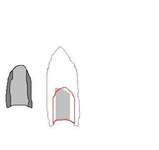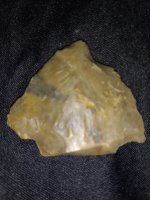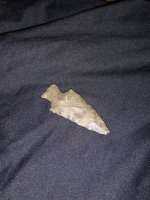Cannonman17
Bronze Member
I was just looking at some points, a clovis point in particular. It was a bit odd in the fact that the flute went a bit farther up the point than what we normally see. Then I started to think... this is where it gets strange- Now both Clovis and Folsom points have fairly close attributes... just some generalizations here but folsom points seem to be on average smaller and fluted the entire length of the point while the clovis seem to be larger on average anyways and only fluted 1/3 to 2/3 of the way on average. I used to do some flintknapping and after I got good enough at it I tried making some paleo points, some turned out and some didn't. One thing that I never mastered was the fluting- I did succeed on occasion but not consistantly. I often ended up with uncontrolled flutes.. sometimes very deep and short and sometimes long narrow and shallow... hard to get it just right. Soo.. after looking at some of these points and their over all shape and fluting characteristics and thinking about my own experiences flintknapping I started to wonder how different these two typologies are...They have both been dated to the paleo period.... both similar in form and function...... what are the chances that the folsom points are simply clovis points that have been re-worked a time or two? I'm wondering this because if you were to make a clovis and used it long enough so that it needed to be re-sharpened what would it end up looking like? I'm just wondering if you took your typical clovis form and shortened it by 1/3 and worked the outside edges in it would make the flute appear wider and had it gone the typical 2/3 up the original point re-working it / remvoing the top 1/3 would make the point look as though the flute went the entire length of the point...I know it might be a stretch but I think a re-worked or re-sharpened clovis point might pass as a folsom
What do you guys think? I'm not looking to change the books I just thought it was an interesting thought worth sharing since I can't find any points to post as of late..

What do you guys think? I'm not looking to change the books I just thought it was an interesting thought worth sharing since I can't find any points to post as of late..

Amazon Forum Fav 👍
Upvote
0










